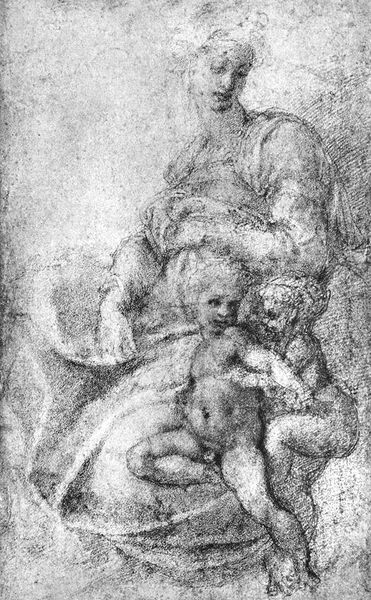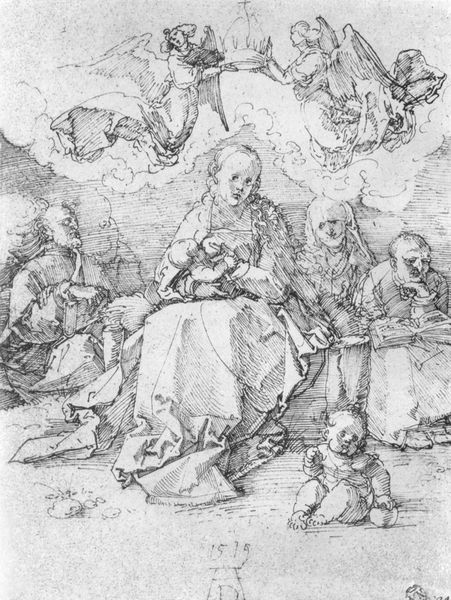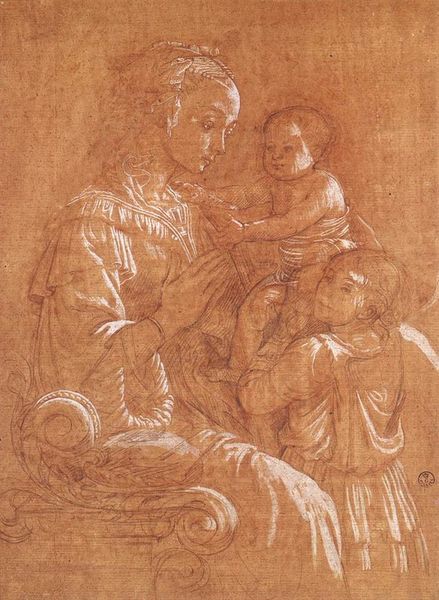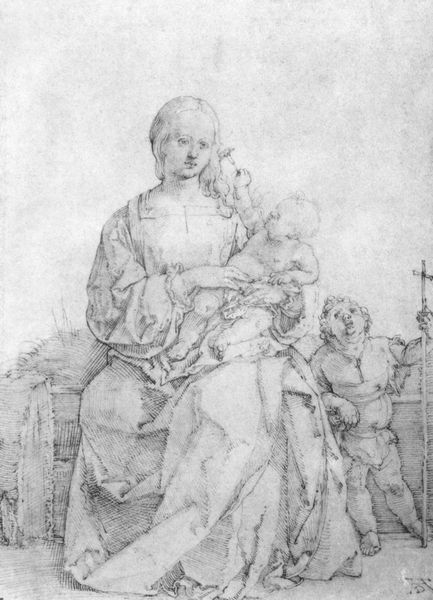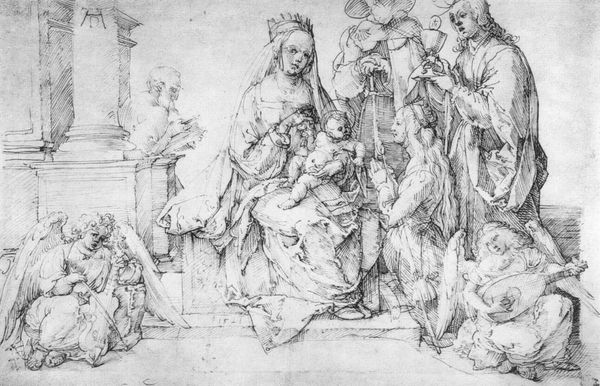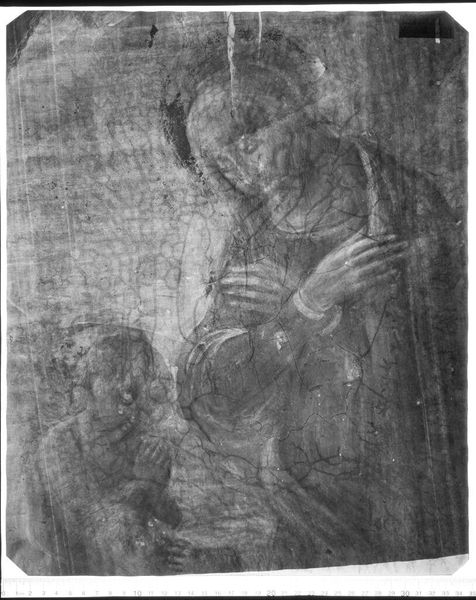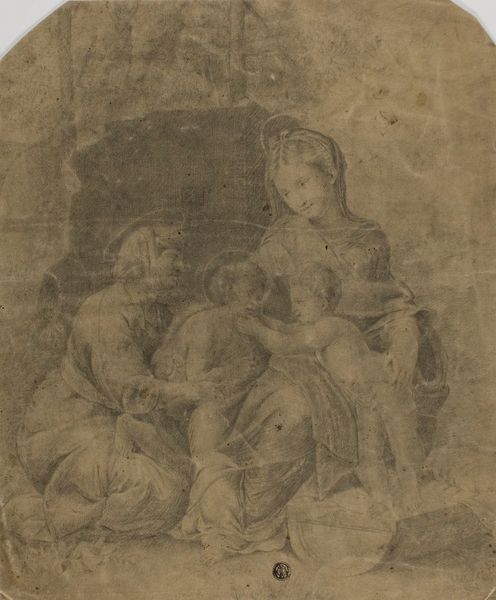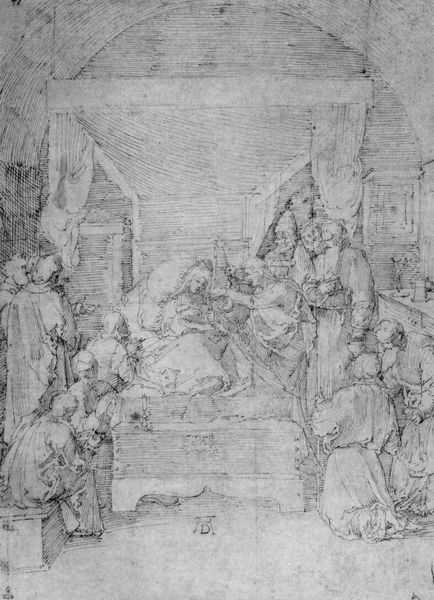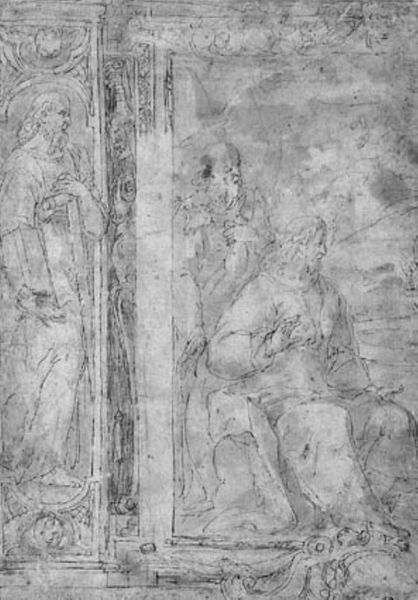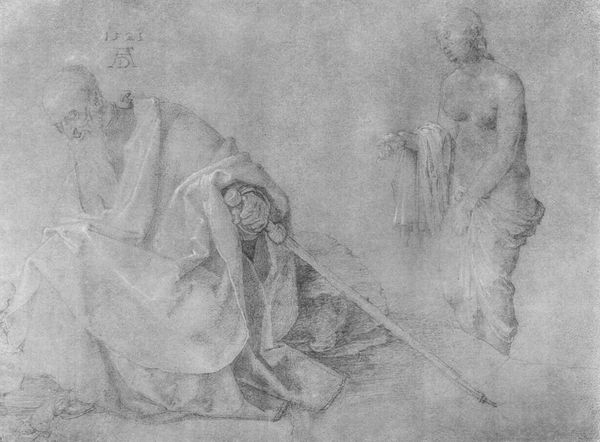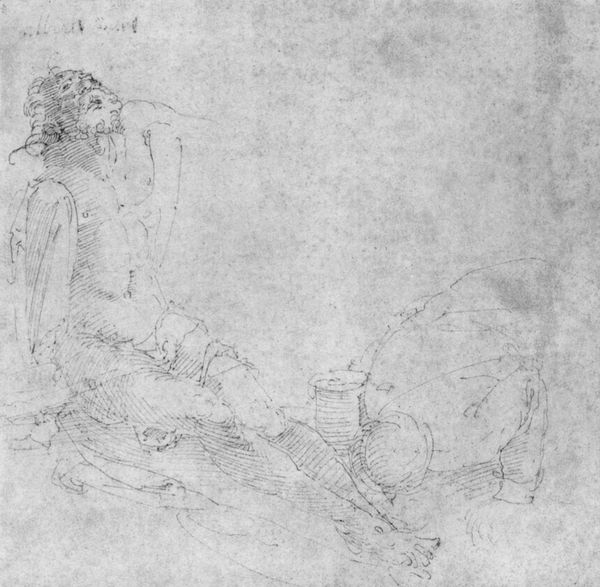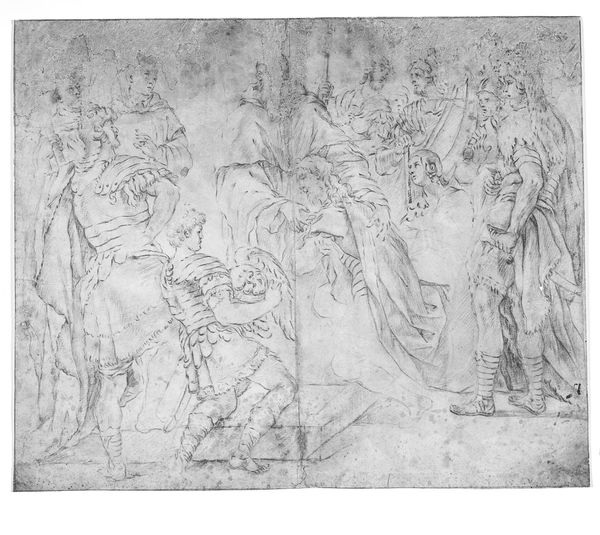
drawing, paper, pencil
#
portrait
#
pencil drawn
#
drawing
#
pencil sketch
#
charcoal drawing
#
figuration
#
paper
#
11_renaissance
#
child
#
sketch
#
pencil
#
christianity
#
history-painting
#
christ
Copyright: Public domain
Curator: Let’s discuss this fascinating pencil sketch titled "Mary and Child, Crowned by an Angel and St. Anna," attributed to Albrecht Dürer. The artwork, rendered on paper, depicts the Virgin Mary with the infant Jesus, alongside St. Anne and an angel bestowing a crown. What are your initial observations? Editor: Well, immediately the subtle tonality grabs me. The artist really plays with line density to achieve a very gentle modelling of the forms, especially around the figures faces and drapery. It feels quite soft and devotional despite the starkness of the medium. Curator: Indeed. We can consider the image as situated within the lineage of depictions of the Holy Kinship, a common subject in the Renaissance that emphasizes the familial connections of Jesus. St. Anne's inclusion emphasizes the matrilineal descent, which resonates with broader discussions about female agency. Editor: Yes, and the way the artist utilizes cross-hatching, particularly in rendering the angel's wings and the fabrics, provides a beautiful textural contrast with the smoother surfaces of the skin. Look how those repeated patterns create depth on a simple 2D plane. Curator: Furthermore, this particular depiction could be viewed through the lens of gender studies. We might analyse how the portrayal of Mary and St. Anne either reinforces or subverts patriarchal structures through visual language. Mary isn't merely a mother; she is being divinely coronated. Editor: That’s certainly present, although it’s also hard to ignore the composition's visual harmony, particularly in the careful distribution of light and shadow, creating an emotional balance within the scene, it suggests a deep attention to design principles above anything else. Curator: That's valid. Yet, art's aesthetic and art's social contexts are intertwined. The placement of the crown by the angel might signal an emerging notion of female sovereignty or even resistance against secular constraints. Editor: Maybe. It seems as if the angel figure looks more like a formal method to add symbolism to a realistic figure without delving into theatrics; instead focusing on its internal structure, its skeletal architecture of strokes, to bring forth divine meaning through line alone. Curator: So we arrive at the exciting crossroads: is it political assertion or simply formal embellishment? Ultimately, approaching "Mary and Child, Crowned by an Angel and St. Anna" requires navigating the complex interactions of meaning, history, and the inherent biases we, as viewers, bring. Editor: Agreed. Through this analysis we appreciate not only its aesthetic, but the multiple perspectives it encourages within the framework of human interpretation.
Comments
No comments
Be the first to comment and join the conversation on the ultimate creative platform.
